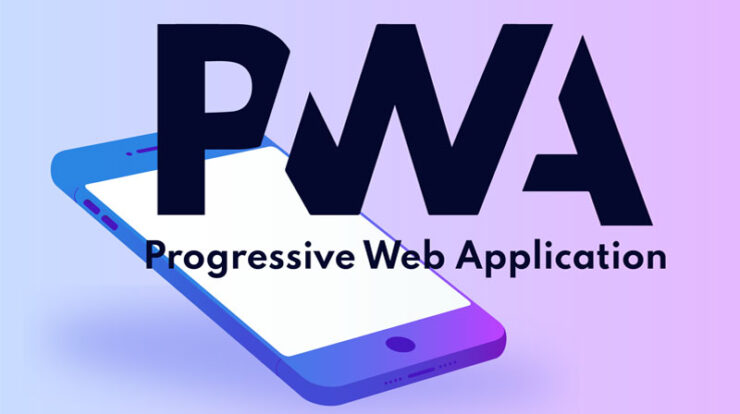
In today’s fast-paced digital landscape, users expect seamless, reliable, and app-like experiences—whether browsing on a desktop, tablet, or smartphone. Traditional websites often fall short in performance and engagement, while native mobile apps require time-consuming downloads and updates. Bridging this gap is the Progressive Web App (PWA)—a hybrid solution combining the best features of both web and mobile applications.
What Is a Progressive Web App (PWA)?
A Progressive Web App (PWA) is a type of web application that uses modern web technologies to deliver an app-like experience directly through a browser. PWAs can be accessed via URLs like regular websites but behave and feel like native mobile apps.
They are progressive because they work for every user, regardless of the browser or device, and enhanced for those using more capable browsers.
Core Characteristics of PWAs
According to Google’s definition, PWAs must have the following key traits:
- Progressive – Works for all users, regardless of browser choice, using feature detection and progressive enhancement.
- Responsive – Fits any form factor: desktop, mobile, tablet, or future devices.
- Connectivity Independent – Can work offline or on low-quality networks using service workers.
- App-like – Feels like a native app, with app-style interactions and navigation.
- Fresh – Always up to date, thanks to service worker updates.
- Safe – Served via HTTPS to ensure security.
- Discoverable – Can be found via search engines since it’s still a website.
- Installable – Users can add it to their home screen without going through an app store.
- Linkable – Easily shared via URLs without complex installation.
How PWAs Work: The Key Technologies
PWAs are built using standard web technologies (HTML, CSS, and JavaScript) enhanced with a few special APIs:
1. Service Workers
A service worker is a script that runs in the background, separate from the web page, allowing PWAs to:
- Cache assets for offline use
- Handle push notifications
- Improve load speed and performance
2. Web App Manifest
This JSON file defines how the app appears and behaves when installed on a device—its name, icons, theme colors, and startup configurations. It allows the PWA to be launched from the home screen, just like a native app.
3. HTTPS
Security is a cornerstone of PWAs. HTTPS ensures encrypted communication, which is essential for features like service workers and geolocation.
Benefits of PWAs
1. Improved Performance
PWAs cache resources locally, leading to faster load times and smoother performance, even with poor connectivity.
2. Offline Accessibility
Thanks to service workers, users can access cached content offline or during network disruptions.
3. No App Store Hassle
Unlike native apps, PWAs don’t require installation from app stores. Users can “install” them directly from the browser, saving time and device storage.
4. Cost-Effective Development
A single PWA works across all devices and platforms, reducing development and maintenance costs compared to creating separate iOS and Android apps.
5. Enhanced User Engagement
With features like push notifications, background sync, and home-screen icons, PWAs boost user engagement and retention rates.
6. SEO-Friendly
Since PWAs are still websites, they are search-engine indexable, offering better discoverability than native apps.
Real-World Examples of Successful PWAs
Many leading companies have adopted PWAs to enhance performance and engagement:
- Twitter Lite – Reduced data usage by 70% and saw a 65% increase in pages per session.
- Starbucks – Offers an offline-capable PWA that lets customers browse menus and customize orders even without a network.
- Pinterest – Saw a 60% increase in user engagement and a 40% rise in ad revenue.
- Forbes – Their PWA loads in under three seconds, improving time on site and conversions.
Challenges and Limitations
Despite their advantages, PWAs are not without challenges:
- Limited iOS Support – While Apple supports many PWA features, some APIs (like push notifications and background sync) are restricted.
- Hardware Access – Native apps still have deeper access to device hardware (e.g., Bluetooth, NFC, sensors).
- Brand Visibility – App stores remain major discovery channels for users; PWAs miss out on this exposure.
- User Awareness – Many users are unfamiliar with PWAs and may not realize they can “install” a website.
The Future of PWAs
As browsers and operating systems continue to evolve, PWAs are poised to become the dominant model for mobile web experiences. With Google, Microsoft, and other major tech players pushing PWA standards forward, adoption will only increase.
Future enhancements like more robust offline capabilities, integration with system APIs, and greater cross-platform support will blur the line between web and native applications even further.
In fact, companies are increasingly embracing the “app-less future”, where the web—not the app store—is the gateway to rich, interactive experiences.
